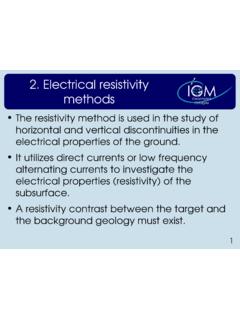Search results with tag "Electrical resistivity"
2. Electrical resistivity methods
personales.upv.es2. Electrical resistivity methods The resistivity method is used in the study of horizontal and vertical discontinuities in the electrical properties of the ground. It utilizes direct currents or low frequency alternating currents to investigate the electrical properties (resistivity) of the subsurface.
Silicon Ingot Production - MicroChemicals
www.microchemicals.comfi ed electrical resistivity. A disadvantage of the FZ method are the relatively high cost compared with the Czochralski tech-nique which is typ-ically three to four times with respect to the fi nished wafer. For technical rea-sons, the diameter of the monocrystal is limited and allows for FZ wafers meas-uring a maximum of eight inches with the
Electrical Resistivity as a Function of Temperature
www.kstreetstudio.comresistivity of copper and nichrome as functions of temperature. Conductivity – The electrical conductivity of materials is generally expressed by the equation where n is the number of charge carriers, q is the charge of the ion, electron or hole, and : is the mobility of the charged species.
ELECTRICAL RESISTIVITY SURVEYS - Geopotential
www.geopotential.bizAdvantages • Soundings can be used to determine the depth and thickness of subsurface layers, depth to the water table, and bedrock. • Profiling can be used to detect and locate contaminant plumes.



